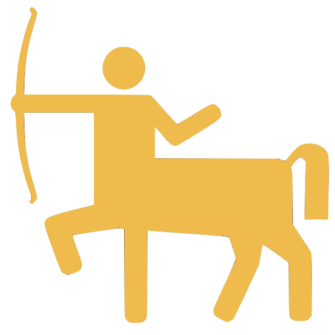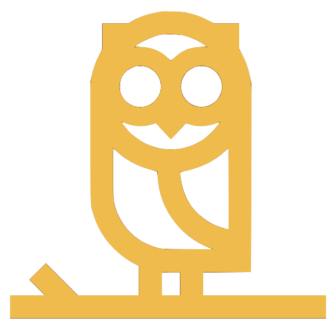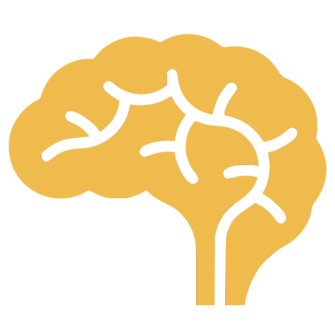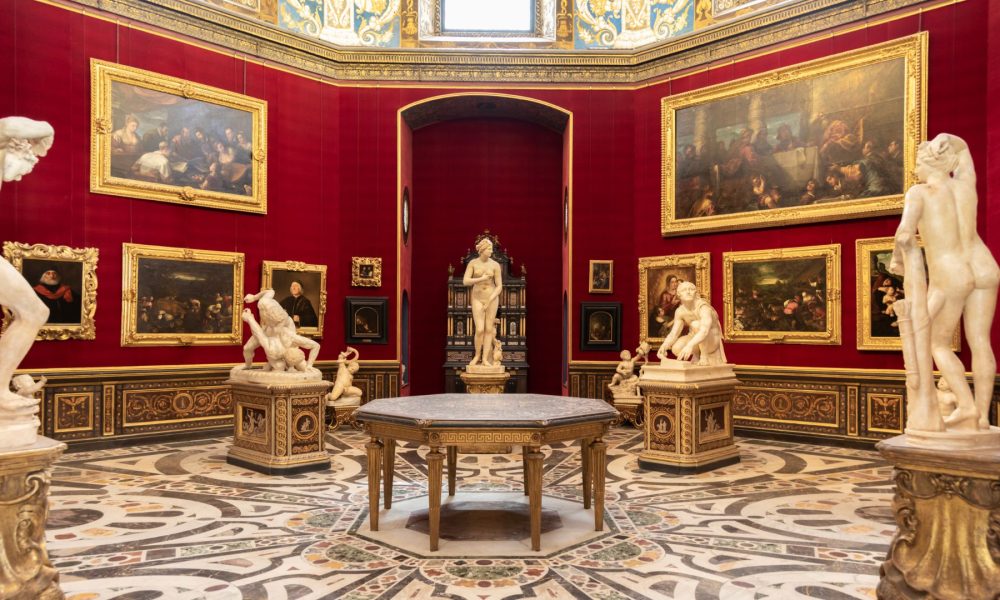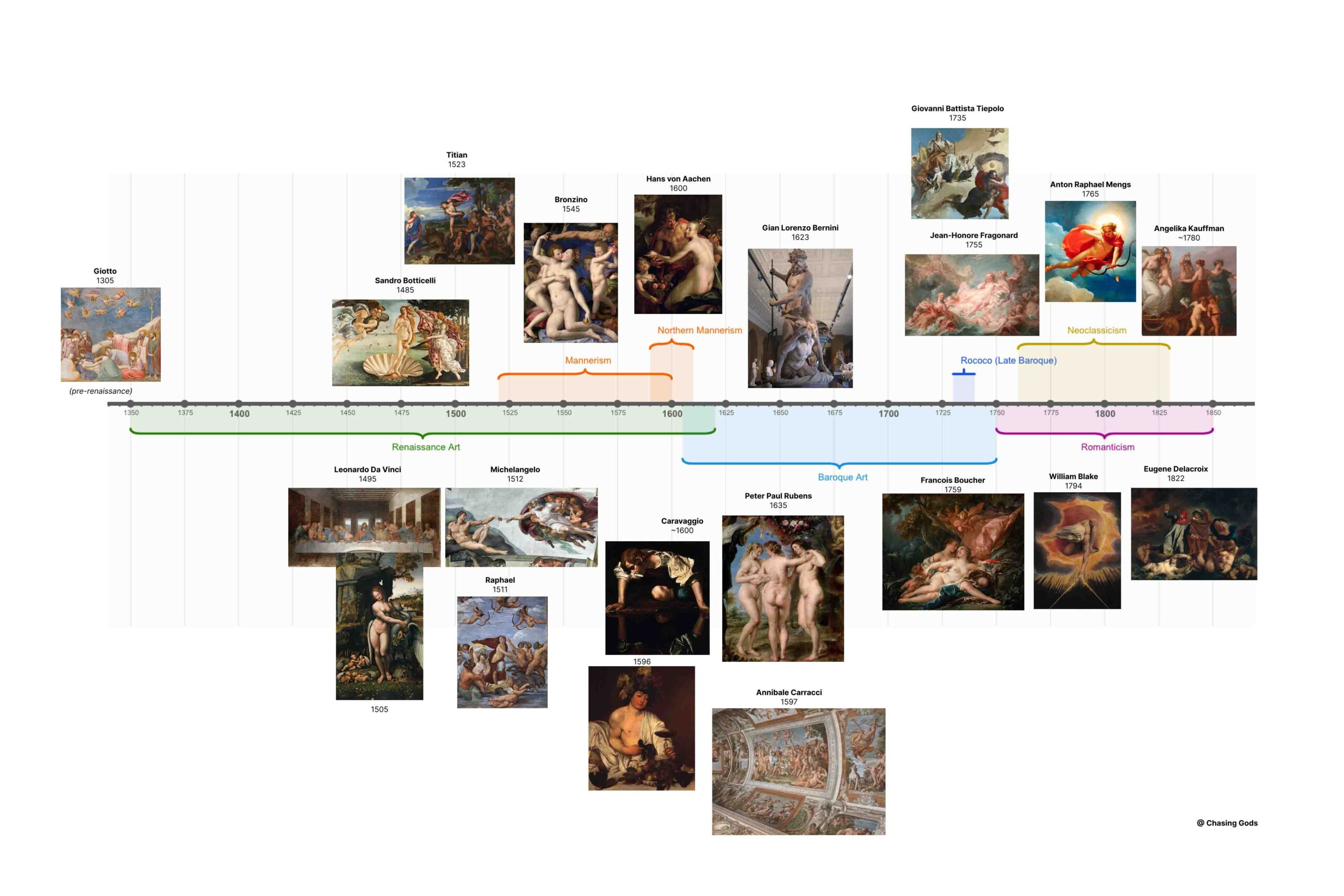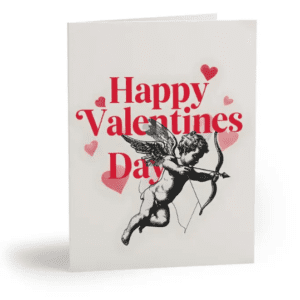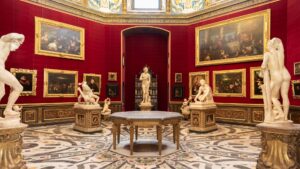When we think of Greek or Roman mythology, many of the images that come to mind—Zeus, Athena, Apollo—are shaped by art from the Renaissance era. This period saw a revival of classical antiquity, and the way mythological gods were portrayed in Renaissance paintings has had a lasting influence on how we imagine them today. Even our idea of the Christian ‘God’ is influenced by Zeus! Let’s explore how Renaissance art helped shape these lasting impressions of mythology.
This Timeline Will Help Give an Overview Of:
- The key timeframes
- The art styles that emerged during and after the Renaissance
- Key artists from these periods
- The look and characteristics of the art
Things to Keep in Mind With This High-Level Timeline:
- The artworks span regions across Europe, starting in Italy and spreading to France, Germany, the Netherlands, Portugal, Spain, Austria, and beyond.
- Renaissance, Neoclassicism, and Romanticism are movements that shaped art, while Mannerism, Baroque, and Rococo refer to specific styles that emerged during these periods.
- There are many more artists that define these periods—I’m just highlighting a few.
- This timeline provides a rough overview, as each region had its own specific artistic timeline.
- Above each piece of art, the artist’s name is bolded, and below it is the date of the painting.
- While art can include painting, sculpture, architecture, furniture, music, dance, and churches, this timeline focuses primarily on paintings.
A Closer Look at the Key Art Periods
Renaissance Art (1350 – 1620 AD)
A major revival of classical antiquity and humanism.
Key Artists: Leonardo da Vinci, Botticelli, Donatello, Michelangelo, Raphael, Titian.
Mannerism (1520s – 1600)
Exaggerated qualities of High Renaissance art, with asymmetrical, elegant, but often unnatural forms.
Key Artists: Ignudi, Bronzino, El Greco, Parmigianino.
Northern Mannerism (Late 1500s – Early 1600s)
A version of Mannerism from northern Europe (France, Prague, and the Netherlands), emphasizing intricate allegories, detailed scenes, and symbolic interpretations of mythology.
Key Artists: Bartholomeus Spranger, Hans von Aachen, Hendrick Goltzius, Cornelis van Haarlem, Giuseppe Arcimboldo (not mythological, but famous for his distinctive style).
Baroque Art (Early 1600s – 1750s)
Inspired by the Catholic Church’s desire to counter Protestant simplicity, this style is known for its exuberant details, rich colours, and grandeur designed to inspire awe.
Key Artists: Peter Paul Rubens, Michaelina Wautier, Caravaggio, Annibale Carracci, Giuseppe Mazzuoli, Gian Lorenzo Bernini.
Rococo (Late Baroque or Rocaille) (1730s)
A highly decorative and theatrical style featuring curves and elements inspired by nature, such as shells, acanthus leaves, birds, bouquets of flowers, and fruit. Other ornaments include musical instruments, angels, and Chinoiserie (pagodas, dragons, monkeys, exotic flowers, and Chinese figures).
Key Artists: François Boucher, Jean-Honoré Fragonard, Giovanni Battista Tiepolo, Carl Albert von Lespilliez, Johann Baptist Zimmermann, Lambert-Sigisbert Adam, Jean-Baptiste van Loo.
Neoclassicism (1760s – 1830s)
A return to classical antiquity, directly drawing from Renaissance classicism, with an emphasis on heroism and morality from Greco-Roman myths. This movement sought simplicity and the purity of ancient classical art.
Key Artists: Jacques-Louis David, Jean-Auguste-Dominique Ingres, Angelica Kauffman, Anton Raphael Mengs, François Gérard, Augustin Pajou.
Romanticism (Late 1700s – Mid-1800s)
A reaction to the Industrial Revolution and the Age of Enlightenment, rejecting the scientific view of nature. This movement celebrated nature, the mystical, and the idealization of the past, with a focus on chivalry, heroism, and the exotic. Passion and intuition were seen as crucial to understanding the world, and beauty was something that stirred deep emotions.
Key Artists: William Blake, Eugène Delacroix, Francisco Goya.


